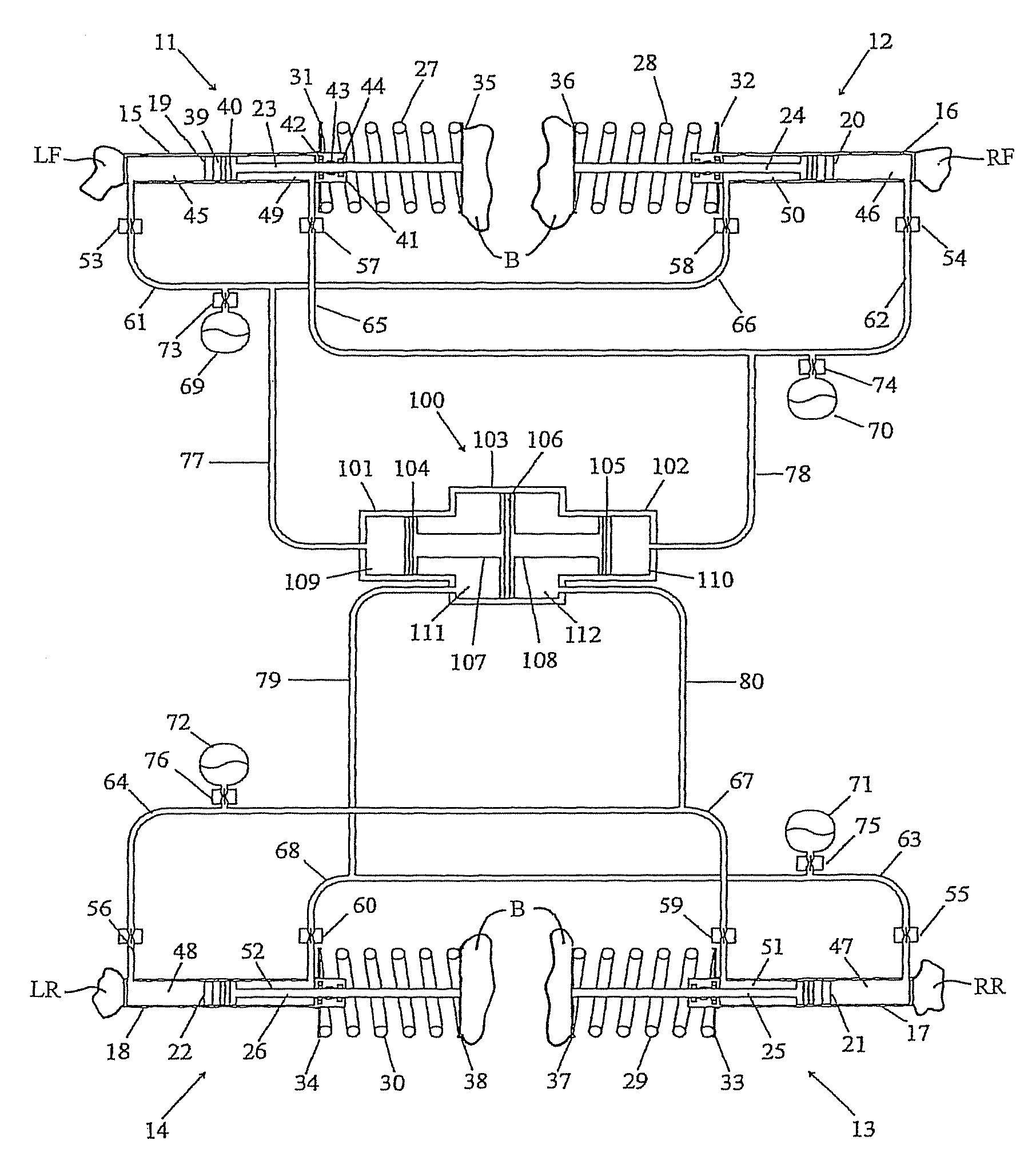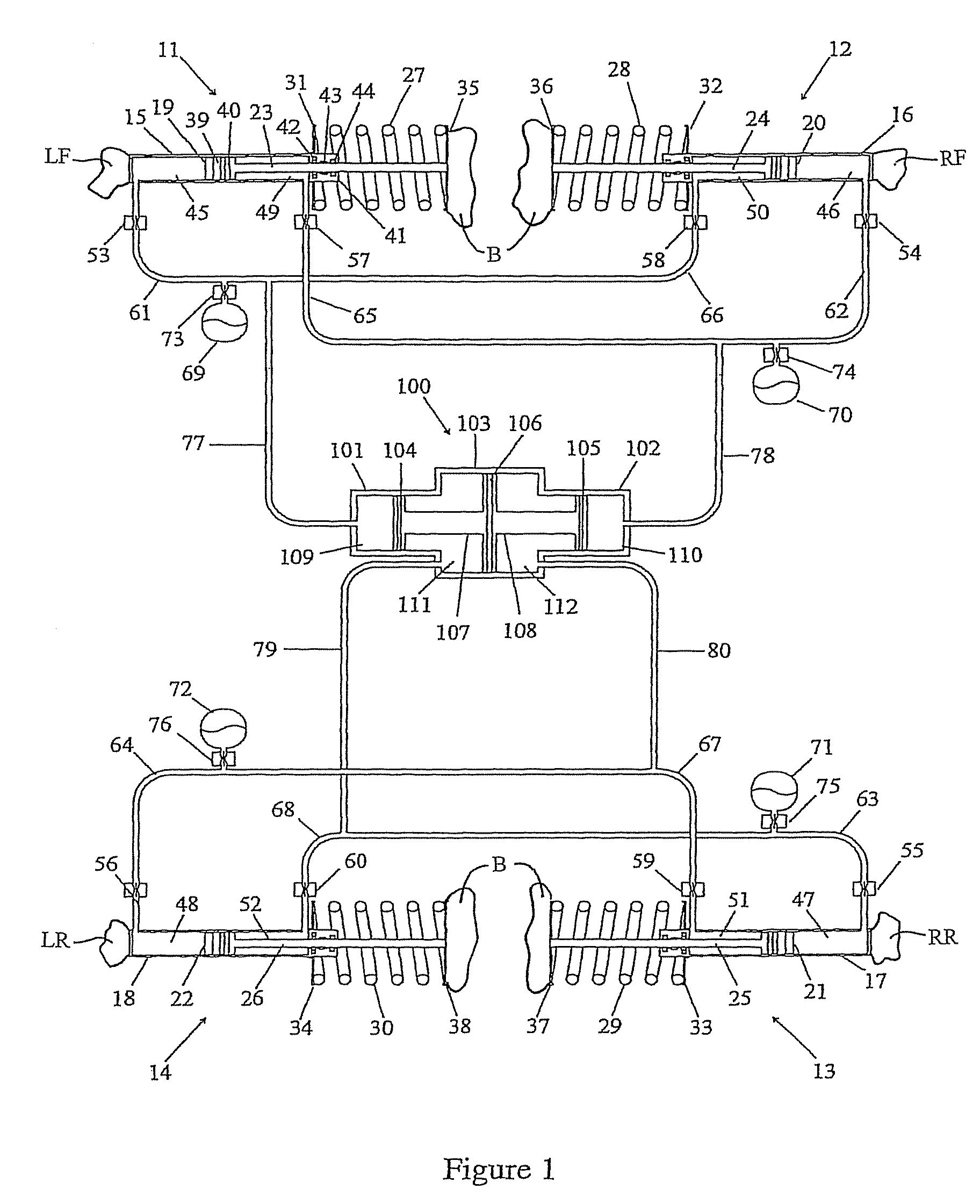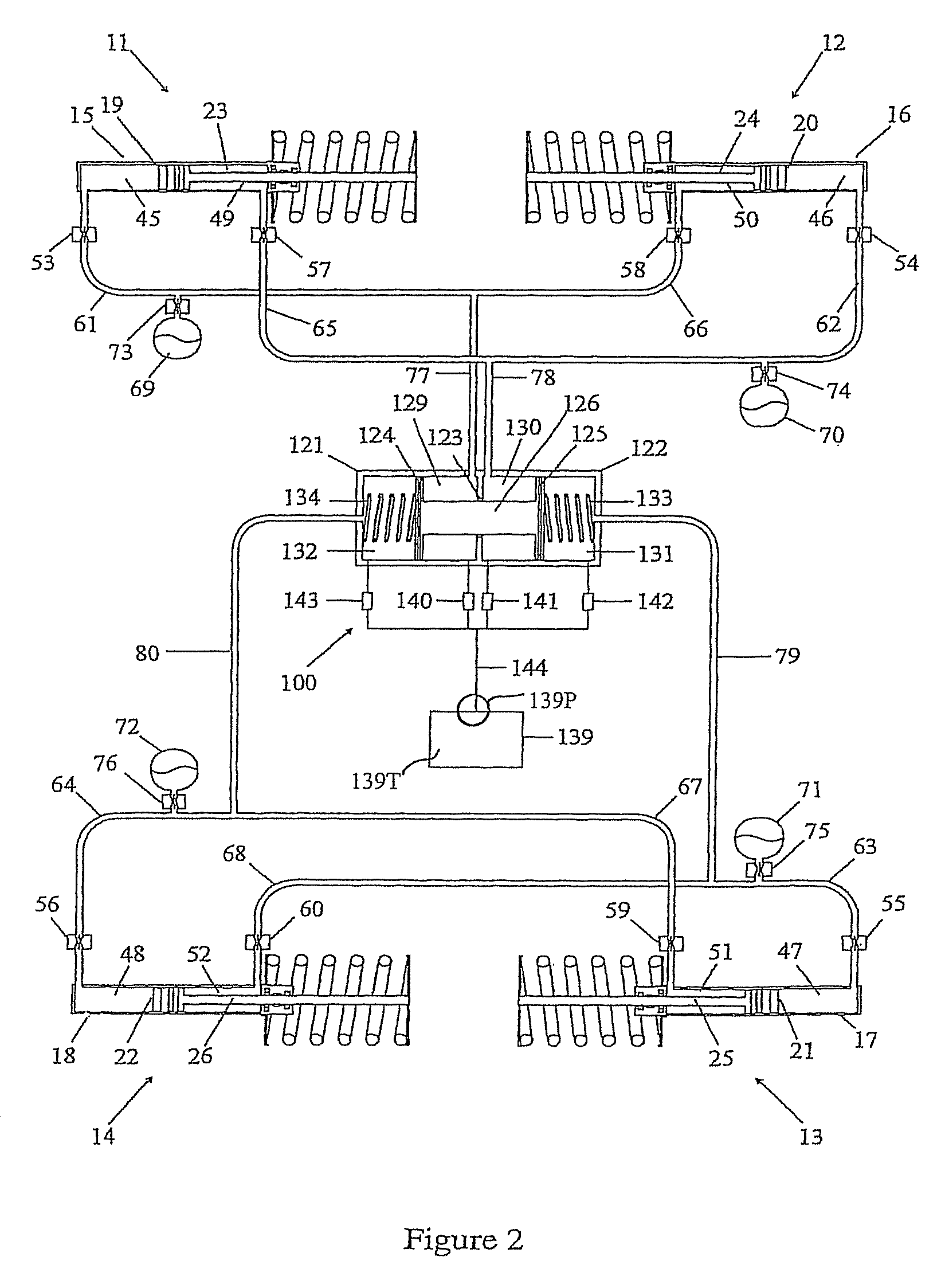Hydraulic system for a vehicle suspension
a hydraulic system and vehicle technology, applied in the direction of suspensions, interconnection systems, suspensions, etc., can solve the problems of significant ride comfort limitations, seat friction, and change in ride height, and achieve the effect of removing the roll stiffness of the hydraulic system and zero warp stiffness
- Summary
- Abstract
- Description
- Claims
- Application Information
AI Technical Summary
Benefits of technology
Problems solved by technology
Method used
Image
Examples
Embodiment Construction
[0044]Referring initially to FIG. 1, there is shown a suspension system for a vehicle. Four wheel rams (11, 12, 13, 14) are located between the vehicle body B (shown schematically) and four orthogonally disposed wheels LF (left front), RF (right front), LR (left rear), RR (right rear) (shown schematically) of the vehicle. Each wheel ram includes a cylinder (15, 16, 17, 18) connected to a wheel hub or other suspension geometry to move with the wheel, a piston (19, 20, 21, 22) slidably housed within the cylinder, and a rod (23, 24, 25, 26) fixed between the piston and the body of the vehicle. The connection of the rod to the vehicle body may be by any known means, usually through a rubber bushing which in the case of MacPherson strut geometry usually includes a bearing.
[0045]For ease of understanding, the vehicle resilient support means are shown as “coil-overs”, i.e. coil springs (27, 28, 29, 30) positioned around the wheel ram and located between a lower spring plate (31, 32, 33, 34...
PUM
 Login to View More
Login to View More Abstract
Description
Claims
Application Information
 Login to View More
Login to View More - R&D
- Intellectual Property
- Life Sciences
- Materials
- Tech Scout
- Unparalleled Data Quality
- Higher Quality Content
- 60% Fewer Hallucinations
Browse by: Latest US Patents, China's latest patents, Technical Efficacy Thesaurus, Application Domain, Technology Topic, Popular Technical Reports.
© 2025 PatSnap. All rights reserved.Legal|Privacy policy|Modern Slavery Act Transparency Statement|Sitemap|About US| Contact US: help@patsnap.com



